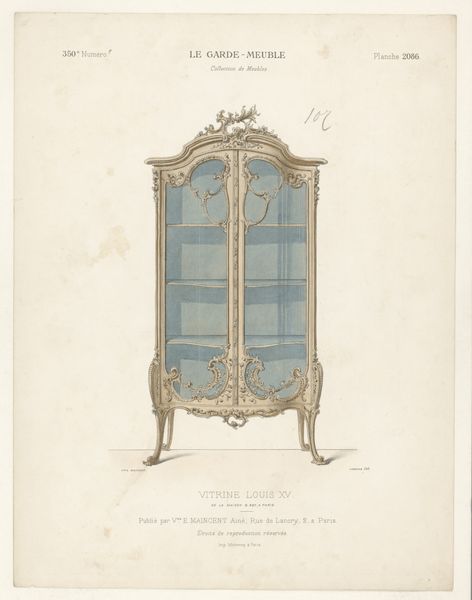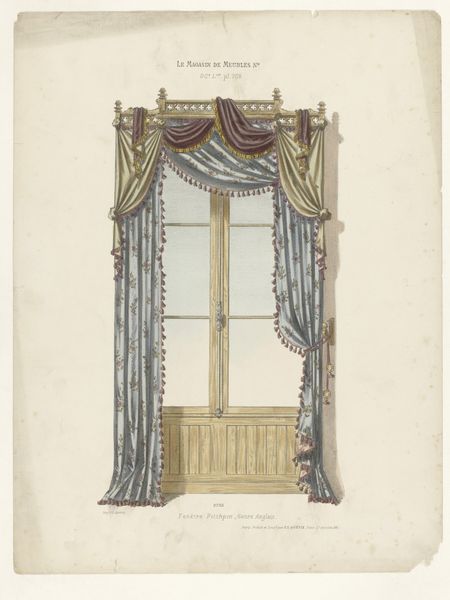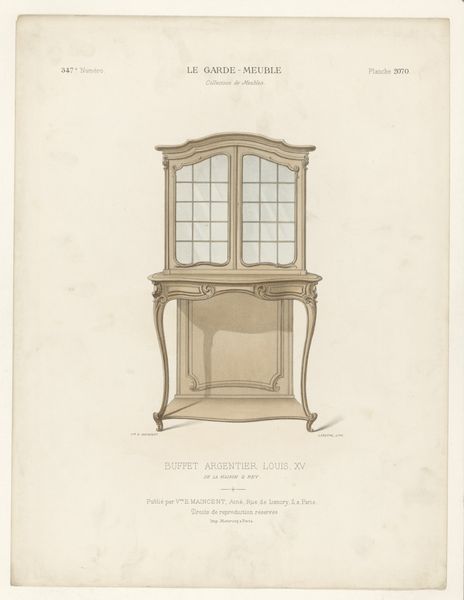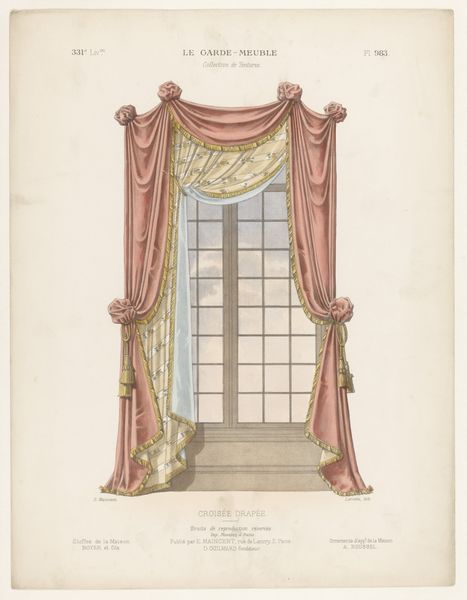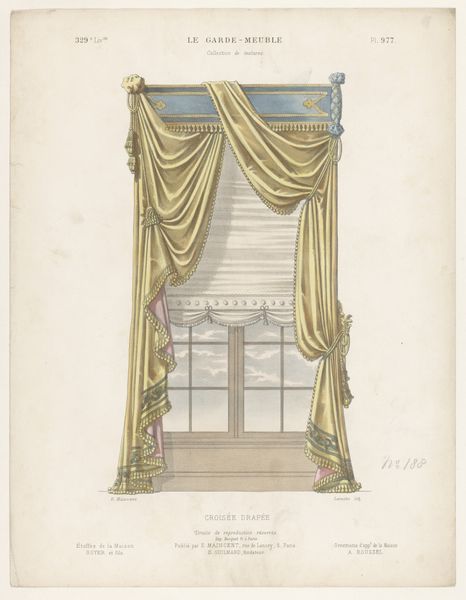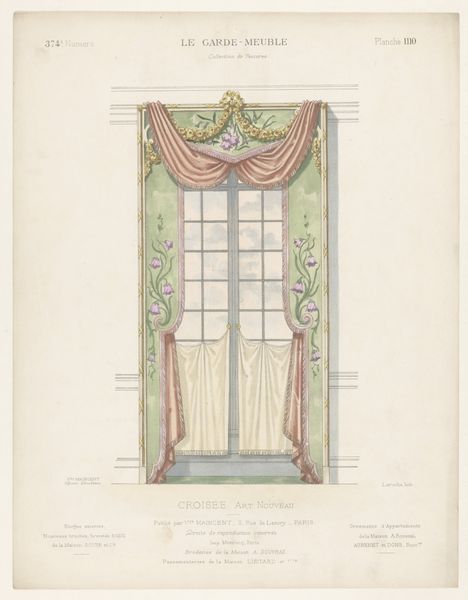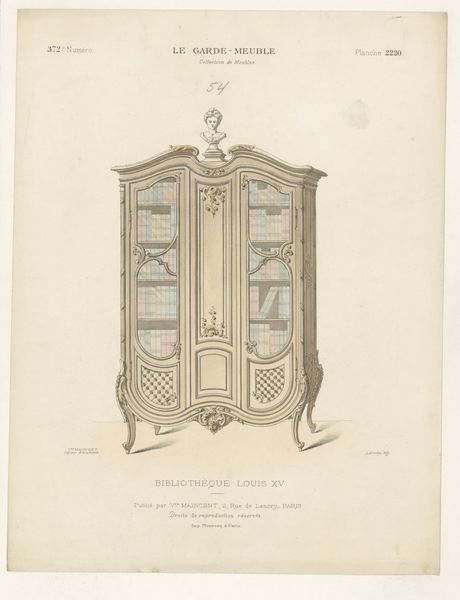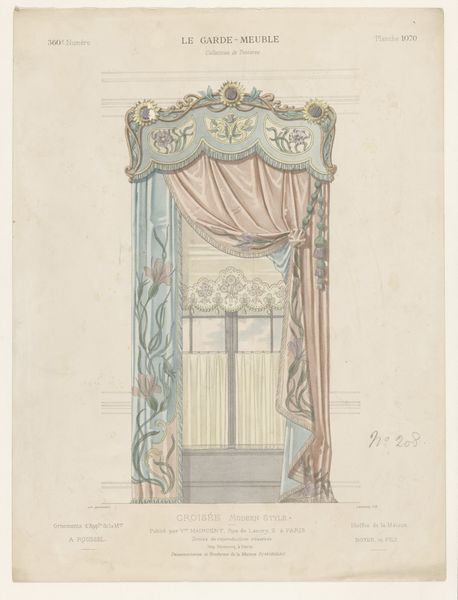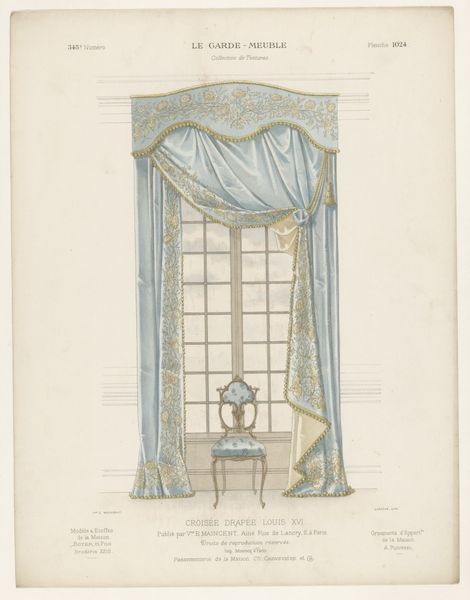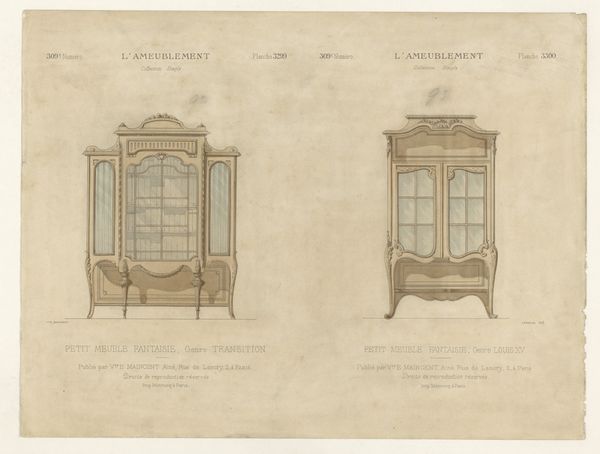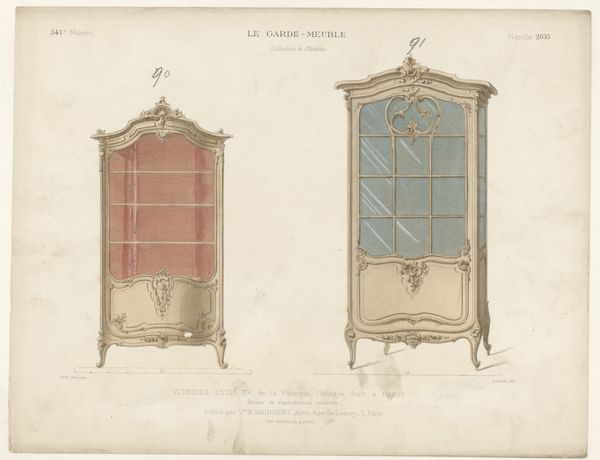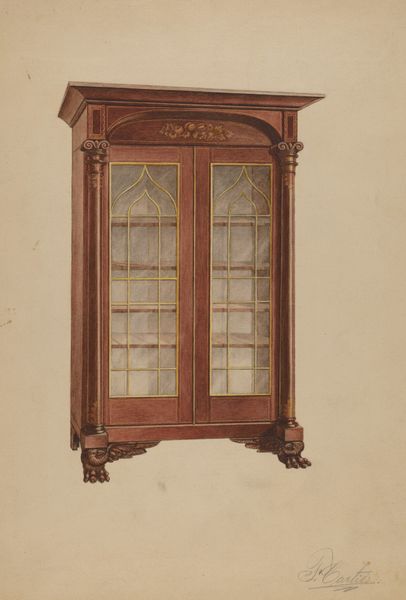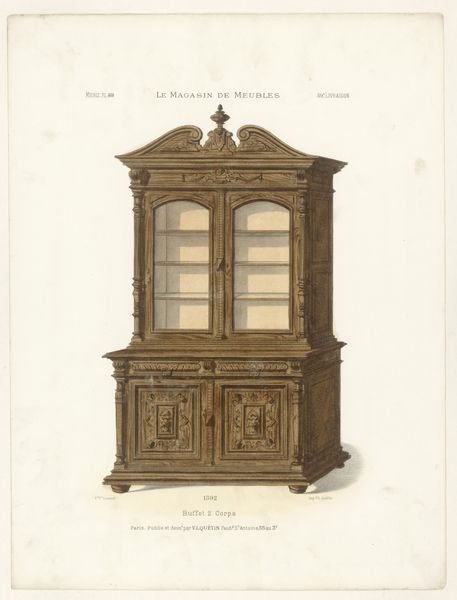
Dimensions: height 359 mm, width 273 mm
Copyright: Rijks Museum: Open Domain
Curator: Here we have "Buffetkast," a drawing and print that falls somewhere between 1895 and 1935, attributed to Léon Laroche. Editor: My first thought is lightness. The delicate lines, the pastel blues, it almost floats off the page. Is this typical of decorative art from that time? Curator: Yes, indeed. This piece shows the persistence of Neoclassical ideals well into the late 19th and early 20th centuries. Decorative art at the time engaged with both tradition and modernity, using historical styles in new, accessible ways, reflecting changing social tastes and manufacturing capabilities. Furniture designs, in particular, had become increasingly accessible via mass-produced catalogs. Editor: It feels almost aspirational, doesn’t it? The symmetry, the classical details – it suggests a certain level of refinement and status. I wonder what symbolic weight it held. A display cabinet, showcasing precious objects... what would they have meant to its owner? Curator: Beyond merely holding possessions, these cabinets were performative spaces. Objects inside could signal a family's lineage, travel experiences, or intellectual pursuits. This 'Buffetkast', in particular, with its glass doors, acted as a stage where the owner could carefully curate an image of themselves for visitors, playing an integral role in shaping social interactions. The cabinet becomes a powerful tool. Editor: Fascinating. So it’s less about the furniture itself and more about what it represents? A tableau of wealth and cultural capital. It feels very intentional, doesn't it? Not simply about storage but the very careful arrangement of objects as a way of establishing identity. Curator: Precisely. It underscores how the public display of belongings was used to craft identity. The ability to acquire and display, for example, exotic artifacts demonstrated an engagement with a larger, rapidly globalizing world. These decorative arts pieces illustrate more than individual artistry, they become potent symbols of a society's values. Editor: Seeing this 'Buffetkast' now, it makes me consider how much we still perform with our belongings, even in the age of social media, we display items carefully and in doing so construct stories about ourselves and the objects we surround ourselves with. Curator: That’s a very insightful connection. Art like this provides a lens through which we might reassess present-day consumer habits and social rituals, considering the layers of social significance encoded in seemingly commonplace things.
Comments
No comments
Be the first to comment and join the conversation on the ultimate creative platform.
